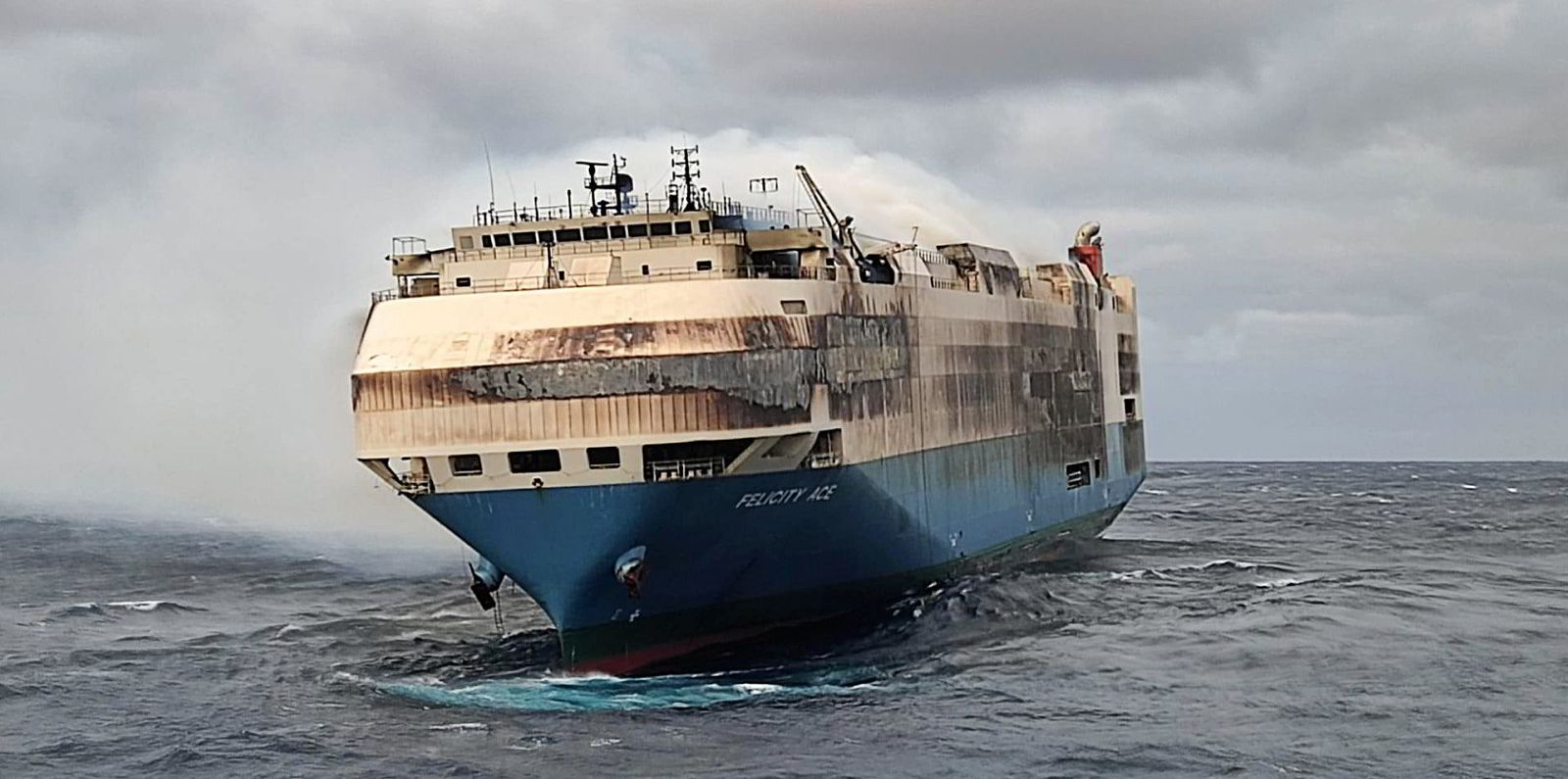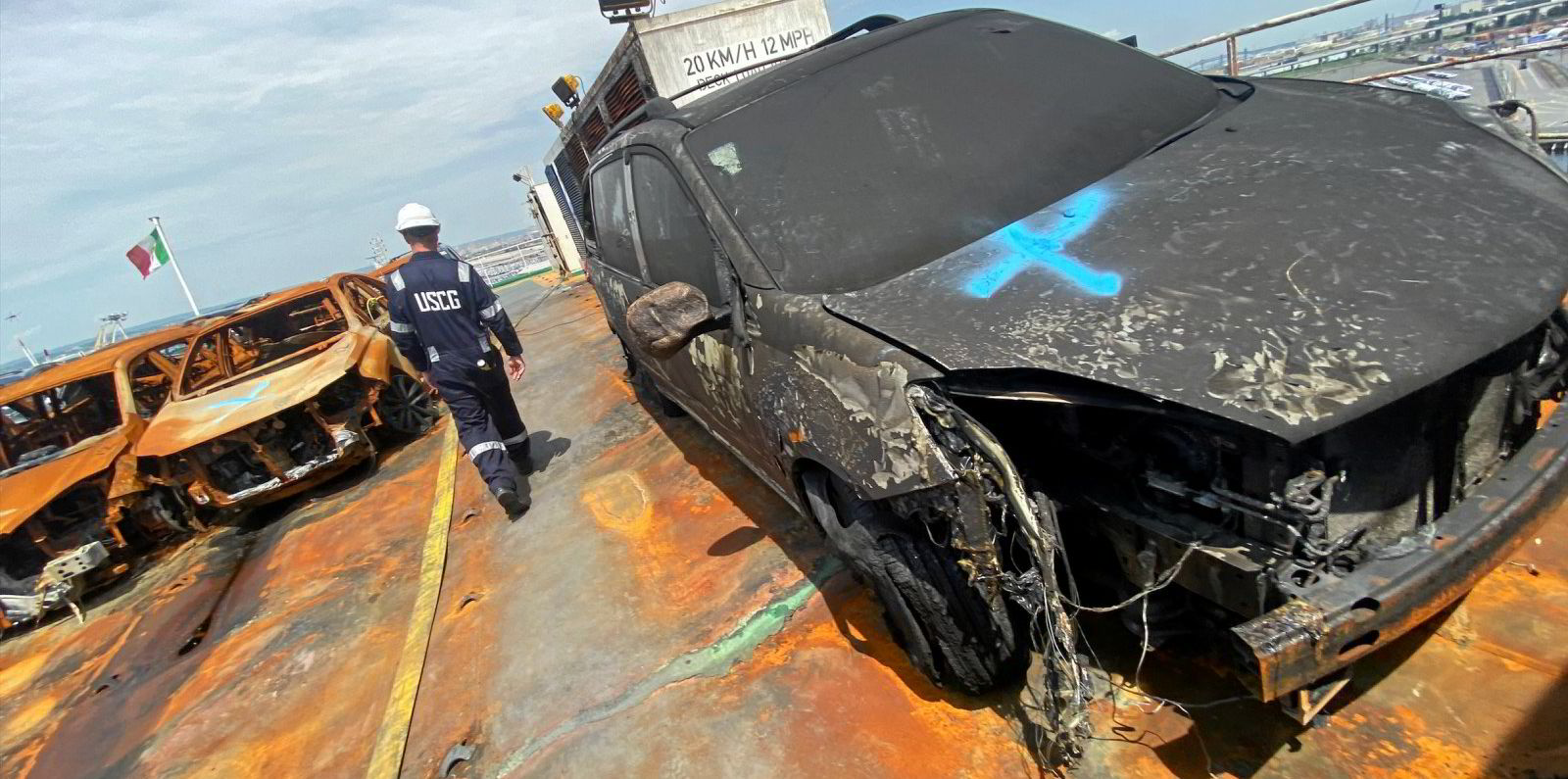Japanese shipping giant Mitsui OSK Lines is seeking solutions from artificial intelligence to help minimise potential fire risks when transporting electric vehicles that have been associated with car carrier blazes.
The company has formed a special team to study the safe transportation of EVs after the industry was hit by a series of car carrier fires that cost insurers more than $1bn.
Speaking to TradeWinds, Yoshikazu Hirose, manager of MOL Auto Carrier Express (MOL Ace) — the group’s car carrier division cum team leader of EV project and research — said his team includes seafarers and peers from commercial and technical divisions.
“EVs are new to the car carrier industry and when the vehicles start burning, the scenario is different from that of conventional automobiles due to the batteries,” he said. “We have to know the risk of transporting EV, need to know how it burns and how to prevent and fight the fire.”
EVs made up about 13% of global car sales in 2022 and their growth is set to be explosive as more consumers make the switch to eco-friendly alternatives to traditional petrol or diesel engines.
MOL is now deploying an artificial intelligence system to fight fires. It is fitting cameras and an AI system in the cargo holds on most of its new LNG dual-fuel pure car/truck carriers for early fire detection.
The devices, developed by maritime technology firm Captain’s Eye, will be installed on 10 newbuildings delivering from 2024. MOL is also considering retrofitting existing vessels with the system.
In addition to installing an AI-based fire detection system, MOL is working with car makers to have individual vehicles fitted with a warning apparatus that can alert crew during sea transport.
“We are talking to car manufacturers in China, Japan and India, and they are keen on this. The technology is still being developed,” said Hirose.

MOL is also retraining its crew in battling ship fires as flames from EVs can be harder to extinguish and the technique is different to those caused by conventional vehicles.
“A car-carrier is a [moving] multi-storey car park and the vehicles are parked closely beside one another … it is difficult to use big equipment to extinguish the fire,” said Hirose.
In February 2022, the MOL-operated 6,400-ceu Felicity Ace (built 2005) caught fire while carrying some 4,000 vehicles including luxury brands and electric cars. All 22 crew members were safely evacuated, but the ship sank after burning for two weeks. The cause of the fire was never found.
The risk of fire on car carriers has attracted considerable attention in the shipping industry. The International Union of Marine Insurers is also calling for a better understanding of EV fires and how they can be controlled.
Thermal runway
The association’s comments followed a fire on the 6,200-ceu car carrier Fremantle Highway (built 2013) in the North Sea in July 2023, which resulted in the death of one crew member.
Lithium-ion batteries in a cargo of electric cars are strongly suspected of having caused the fire on the Fremantle Highway.
Lithium-ion batteries can store large amounts of energy, but they may spontaneously experience a thermal runaway — a chemical reaction that might result in the cell igniting — if it is damaged, shorted, overheated, faulty or overcharged. The fires are not only intense but also long-lasting and potentially toxic.
IUMI said early detection of fire and response is critical. It recommends the use of drencher systems along with video surveillance, while CO2 systems and foam systems are also effective on car carriers. In addition, it suggested that vehicles should be screened for damage before loading.






